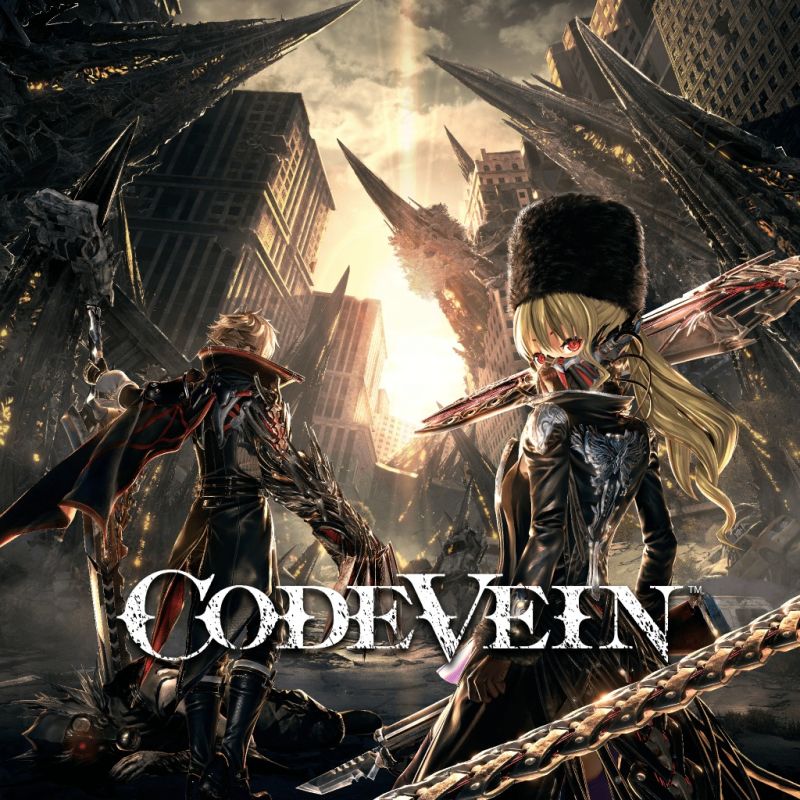
Code Vein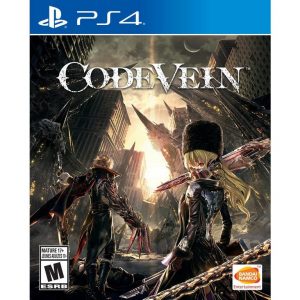
Game Reviewed: Code Vein
Publisher: Namco Bandai
Developer: Namco Bandai, Shift
Reviewer: Samuel Gronseth II
Platform(s): PS4, Xbox One, PC
Category: Action RPG
ESRB Rating: M
Click Here to Learn More About our Reviews
Game Description:
Code Vein is a third-person action game that takes place in a world ravaged by monsters and supernatural forces. The player creates their own character, then is introduced to a society of immortal people who fight over blood beads, lest they give in to their thirst and become monsters. The protagonist, it turns out, has some sort of connection to the blood beads, and ends up helping a group of people who want to find the source so there will be enough for everyone, rather than relying on power structures that inevitably leave suffering people behind. But this journey will lead them to discover what happened to this world so long ago, and to confront the powers that hold this world hostage.
Ever since the release of Dark Souls in 2011, the video game world has had an obsession with difficult fantasy action games. There’s a weight to this new genre, the feeling that your every movement matters. Enemies hit hard, and the player must learn how to anticipate their attacks and tactics and respond with accuracy and versatility. Code Vein is very much a game in this tradition, but with an aesthetic that is significantly more “anime.”
The result is pretty much what you’d expect from an anime-styled Dark Souls game; a difficult journey through a ruined world, facing fearsome beasts and meeting desperate people in a quest to find the people or powers responsible for keeping this world in ruin and, hopefully, eliminate it to bring greater peace to a broken world.
So let’s talk about what your child will see and do if they play this game.
What Parents Need to Know
Violence:
Code Vein has a lot of blood in it. No graphic gore, such as dismemberment or anything, but plenty of blood. Players will use a variety of martial weapons (spears, swords, hammers, etc.), as well as a variety of magical powers, to attack a variety of creatures, some humanoid and others more monstrous. Attacks result in splatters of blood. The player can also use special attacks, by sneaking up on an enemy or staggering them, that trigger a more stylized camera angle for a special, more brutal attack; a scorpion-like tail that impales a monster into the ground, two spectral hands that pick a monster up and rip it apart, or a spike that juts up from the ground to impale a monster from the inside. When enemies are killed, they turn into sparkling ash and drift away.
Blood is a thematic element running through the whole game, really; everyone has a unique blood code the player can also learn, which changes the way they play and grants them different abilities. Blood is necessary for revanants to survive, else they’ll go mad from hunger and mindlessly wander the world, attacking anything they see. So blood is featured prominently in both the gameplay and the story.
Language:
Mild language, such as “damn,” is used on occasion.
Sexual Content:
Much of the clothing, for men and women, is fairly revealing. The game also has a hot spring where the player can go, clothed in a towel, to reflect on the game thus far (that is to say, rewatch the story beats they’ve gotten through).
Some enemies, mostly powerful bosses, are designed with shapley human forms, such as a lanky female-shaped monster who maneuvers with a polearm (occasionally looking similar to pole dancing), or a creature with the upper half of a wolf grafted onto the upside-down lower form of a human.
Spirituality:
As the player discovers the backstory, it becomes clear that the “magic” of Code Vein is more scientific than spiritual. Immortality is the result of a parasite, which will resurrect the host as long as the parasite itself still exists. Along with this comes a number of abilities unique to each person, though the player has a “void type” blood code that allows them to learn the unique abilities of other people.
So while Code Vein is teeming with magic powers and immortal people and fantastical monsters, it doesn’t use any type of spiritual fiction to explain it.
Positive Elements:
The story of Code Vein is primarily about two things; injustice, and our connection to others. On both of those notes, it has some positive messages. The player and their friends are fighting to find the source of the blood beads because their leader, Louis, learned the hard way that helping individual people wasn’t enough; the cruelty and injustice of this world is systemic, and he plans to fight it at the source. Along the way, the player connects with the other characters, and is rewarded with both gameplay benefits and a better story outcome if they take the time to learn more about the characters and support them in their own struggles.
Reviewers Thoughts:
Lots of games get compared to Dark Souls, but it’s rare that a game really has all the elements to make it truly feel like a successor to that game’s dark fantasy world, punishing gameplay, and rewarding progression. Code Vein manages this feat.
But more impressively, it does so while still retaining a sense of uniqueness. It’s more than just a Dark Souls ripoff, because it finds variety in its identity as both a Souls-like and an anime; the visual flair, detailed anime character creator, and emotional scenes between friends and family members all give it its own identity. It comes with everything we love about Dark Souls seamlessly combined with everything we love about anime, and I had a very good time playing it.
Of course, it’s not really appropriate for children. The bloody violence, dark tone, and suggestive character designs would probably be a bit much for younger players to handle, though I’m sure children of all ages (once they’re old enough to read, at least) could enjoy the gameplay itself. Probably best to keep this one to mature players who enjoy a challenge, and there’s certainly something positive for them to get from fighting for a better world in this fantastical role-playing game.
Samuel Gronseth II
Samuel Gronseth II is an avid video game enthusiast who manages Video Game Reviews at TheSource4Parents.com. He has experience teaching about video games, and is passionate about their storytelling potential. Sam's favorite movie is The Empire Strikes Back, and his favorite video game is Persona 4. Sam lives in Knoxville, TN with his wife, Jimi. To see more of Samuel, check out his Youtube series Games as Lit. 101, where he examines the stories of beloved video games to see what we can learn from them: https://www.youtube.com/gamesasliterature.

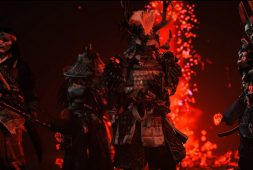
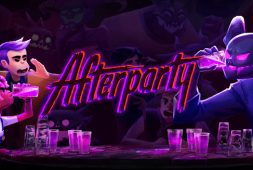
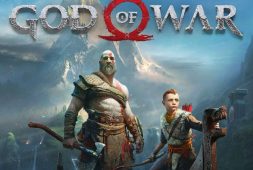
Jeromesic
March 21, 2025 at 4:56 pmalo 789: alo789 – 789alo
Georgetom
March 24, 2025 at 12:16 ambuying from canadian pharmacies: most trusted canadian pharmacies online – escrow pharmacy canada
Arthurwef
March 24, 2025 at 3:58 amhttps://mexicanpharminter.shop/# MexicanPharmInter
certified canadian international pharmacy
MonteMap
March 24, 2025 at 4:15 amorder medicines online india india online pharmacy store online pharmacy india
Jamesjiz
March 24, 2025 at 4:21 amcanadian drug prices: InterPharmOnline – ed drugs online from canada
WillisLutle
March 24, 2025 at 5:46 amhttps://indiamedfast.shop/# cheapest online pharmacy india
Georgetom
March 24, 2025 at 6:49 amIndiaMedFast: order medicines online india – cheapest online pharmacy india
Arthurwef
March 24, 2025 at 9:24 amhttp://interpharmonline.com/# canadian family pharmacy
safe canadian pharmacy
Jamesjiz
March 24, 2025 at 9:52 ammexican pharmacy online store: mexican pharmacy online store – buying from online mexican pharmacy
MonteMap
March 24, 2025 at 1:22 pmonline medicine shopping in india IndiaMedFast.com online pharmacy india
Arthurwef
March 24, 2025 at 2:57 pmhttp://indiamedfast.com/# india pharmacy without prescription
canada pharmacy online legit
Jamesjiz
March 24, 2025 at 3:32 pmmexican pharmacy online order: MexicanPharmInter – mexican pharmacy online
WillisLutle
March 24, 2025 at 5:12 pmhttps://interpharmonline.shop/# buying from canadian pharmacies
Georgetom
March 24, 2025 at 8:14 pmmexican pharmacy online: buying from online mexican pharmacy – mexican pharmacy online
Arthurwef
March 24, 2025 at 8:53 pmhttp://mexicanpharminter.com/# mexican drug stores online
canadian pharmacy checker
Jamesjiz
March 24, 2025 at 9:55 pmmexican pharmacy online order: mexican pharmacy online order – mexican drug stores online
MonteMap
March 24, 2025 at 11:31 pmonline medicine shopping in india india pharmacy without prescription india online pharmacy store
WillisLutle
March 24, 2025 at 11:43 pmhttps://indiamedfast.com/# IndiaMedFast.com
Arthurwef
March 25, 2025 at 3:29 amhttp://mexicanpharminter.com/# mexican pharmacy online order
is canadian pharmacy legit
Jamesjiz
March 25, 2025 at 5:21 amcheapest online pharmacy india: cheapest online pharmacy india – order medicines online india
WillisLutle
March 25, 2025 at 6:24 amhttps://mexicanpharminter.com/# MexicanPharmInter
Howardslutt
March 25, 2025 at 7:30 amed drugs online from canada: canada pharmacy no prescription – canadian pharmacy online reviews
MonteMap
March 25, 2025 at 11:09 amonline pharmacy india buying prescription drugs from india india pharmacy without prescription
Jamesjiz
March 25, 2025 at 12:59 pmbest canadian online pharmacy: canada pharmacy no prescription – canadian pharmacy 365
WillisLutle
March 25, 2025 at 1:10 pmhttps://mexicanpharminter.com/# mexican pharmacy online order
Howardslutt
March 25, 2025 at 4:49 pmbest canadian pharmacy: Pharmacies in Canada that ship to the US – canadian world pharmacy
Arthurwef
March 25, 2025 at 4:56 pmhttps://mexicanpharminter.com/# MexicanPharmInter
canada pharmacy 24h
WillisLutle
March 25, 2025 at 8:12 pmhttps://indiamedfast.com/# online pharmacy india
Jamesjiz
March 25, 2025 at 8:57 pmmexican pharmacy online order: mexican pharmacy online store – Mexican Pharm International
MonteMap
March 25, 2025 at 11:17 pmcheapest online pharmacy india india online pharmacy store india pharmacy without prescription
TerryErose
March 26, 2025 at 2:00 amhttps://kamagrakopen.pro/# Officiele Kamagra van Nederland
Williamben
March 26, 2025 at 2:14 amkamagra jelly kopen: kamagra gel kopen – Kamagra Kopen Online
KennethLus
March 26, 2025 at 5:11 amhttps://tadalafileasybuy.shop/# Cialis 20mg price
GregoryAnter
March 26, 2025 at 5:21 amGeneric 100mg Easy: Generic 100mg Easy – cheapest viagra
TerryErose
March 26, 2025 at 8:03 amhttps://generic100mgeasy.shop/# buy generic 100mg viagra online
Williamben
March 26, 2025 at 9:22 amkamagra pillen kopen: Kamagra – Kamagra Kopen
DwayneLah
March 26, 2025 at 9:30 amcialis without a doctor prescription TadalafilEasyBuy.com TadalafilEasyBuy.com
KennethLus
March 26, 2025 at 10:59 amhttps://kamagrakopen.pro/# kamagra jelly kopen
GregoryAnter
March 26, 2025 at 11:20 amViagra tablet online: buy generic 100mg viagra online – buy generic 100mg viagra online
TerryErose
March 26, 2025 at 1:57 pmhttps://kamagrakopen.pro/# KamagraKopen.pro
Williamben
March 26, 2025 at 4:36 pmKamagra: kamagra pillen kopen – Kamagra
KennethLus
March 26, 2025 at 4:51 pmhttps://kamagrakopen.pro/# KamagraKopen.pro
GregoryAnter
March 26, 2025 at 5:20 pmKamagraKopen.pro: kamagra gel kopen – Officiele Kamagra van Nederland
DwayneLah
March 26, 2025 at 7:01 pmGeneric100mgEasy buy generic 100mg viagra online Generic 100mg Easy
TerryErose
March 26, 2025 at 8:02 pmhttps://kamagrakopen.pro/# KamagraKopen.pro
KennethLus
March 26, 2025 at 11:20 pmhttps://kamagrakopen.pro/# kamagra jelly kopen
Williamben
March 26, 2025 at 11:58 pmCheap Sildenafil 100mg: buy generic 100mg viagra online – Generic 100mg Easy
GregoryAnter
March 27, 2025 at 12:25 ambuy generic 100mg viagra online: Generic Viagra for sale – Generic100mgEasy
TerryErose
March 27, 2025 at 2:57 amhttps://tadalafileasybuy.shop/# cialis without a doctor prescription
KennethLus
March 27, 2025 at 6:29 amhttps://tadalafileasybuy.com/# TadalafilEasyBuy.com
DwayneLah
March 27, 2025 at 6:47 amTadalafil Easy Buy TadalafilEasyBuy.com Cialis 20mg price
GregoryAnter
March 27, 2025 at 8:21 amGeneric 100mg Easy: Generic100mgEasy – Generic100mgEasy
TerryErose
March 27, 2025 at 9:57 amhttp://tadalafileasybuy.com/# TadalafilEasyBuy.com
KennethLus
March 27, 2025 at 1:10 pmhttps://generic100mgeasy.com/# buy generic 100mg viagra online
GregoryAnter
March 27, 2025 at 3:33 pmbuy generic 100mg viagra online: buy generic 100mg viagra online – buy generic 100mg viagra online
TerryErose
March 27, 2025 at 4:24 pmhttps://kamagrakopen.pro/# Kamagra Kopen Online
Williamben
March 27, 2025 at 4:49 pmkamagra jelly kopen: kamagra 100mg kopen – Officiele Kamagra van Nederland
DwayneLah
March 27, 2025 at 6:16 pmViagra tablet online generic sildenafil Viagra without a doctor prescription Canada
KennethLus
March 27, 2025 at 7:36 pmhttps://tadalafileasybuy.shop/# TadalafilEasyBuy.com
Williamben
March 27, 2025 at 10:08 pmKamagraKopen.pro: Kamagra Kopen Online – kamagra kopen nederland
GregoryAnter
March 27, 2025 at 10:45 pmGeneric 100mg Easy: Generic 100mg Easy – Generic100mgEasy
TerryErose
March 27, 2025 at 10:50 pmhttp://tadalafileasybuy.com/# Tadalafil Easy Buy
KennethLus
March 28, 2025 at 2:01 amhttps://kamagrakopen.pro/# kamagra kopen nederland
Williamben
March 28, 2025 at 3:36 amKamagra Kopen: Kamagra – kamagra jelly kopen
TerryErose
March 28, 2025 at 5:07 amhttps://generic100mgeasy.com/# Generic Viagra for sale
DwayneLah
March 28, 2025 at 5:44 amGeneric100mgEasy Generic 100mg Easy buy generic 100mg viagra online
GregoryAnter
March 28, 2025 at 5:47 ambuy generic 100mg viagra online: Generic100mgEasy – buy generic 100mg viagra online
KennethLus
March 28, 2025 at 8:15 amhttps://generic100mgeasy.com/# Generic100mgEasy
TerryErose
March 28, 2025 at 11:14 amhttps://tadalafileasybuy.shop/# Tadalafil Easy Buy
GregoryAnter
March 28, 2025 at 12:36 pmTadalafilEasyBuy.com: TadalafilEasyBuy.com – Tadalafil Easy Buy
KennethLus
March 28, 2025 at 2:20 pmhttps://generic100mgeasy.com/# Cheap generic Viagra
DwayneLah
March 28, 2025 at 4:52 pmGeneric100mgEasy Generic100mgEasy Generic100mgEasy
Williamben
March 28, 2025 at 7:09 pmkamagra 100mg kopen: Officiele Kamagra van Nederland – kamagra pillen kopen
GregoryAnter
March 28, 2025 at 7:22 pmGeneric100mgEasy: Generic 100mg Easy – Generic 100mg Easy
KennethLus
March 28, 2025 at 8:27 pmhttps://kamagrakopen.pro/# Officiele Kamagra van Nederland
Jessedib
March 29, 2025 at 1:48 amпин ап казино официальный сайт: https://pinupkz.life/
Jamesmig
March 29, 2025 at 1:50 amпин ап вход – пин ап вход
Williampaics
March 29, 2025 at 4:52 amпин ап вход – pinup 2025
DwayneLah
March 29, 2025 at 6:29 amkamagra gel kopen kamagra gel kopen kamagra 100mg kopen
Jamesmig
March 29, 2025 at 8:10 amпин ап казино – пин ап зеркало
Jessedib
March 29, 2025 at 8:25 amпин ап казино: https://pinupkz.life/
Williampaics
March 29, 2025 at 11:06 amпин ап казино официальный сайт – пин ап казино
Jamesmig
March 29, 2025 at 2:38 pmpinup 2025 – пин ап казино
Jessedib
March 29, 2025 at 3:08 pmпин ап казино: https://pinupkz.life/
Williampaics
March 29, 2025 at 5:18 pmпин ап казино зеркало – pinup 2025
DwayneLah
March 29, 2025 at 8:52 pmGeneric 100mg Easy buy generic 100mg viagra online Generic100mgEasy
Jamesmig
March 29, 2025 at 9:04 pmпинап казино – пинап казино
Jessedib
March 29, 2025 at 9:48 pmпин ап казино официальный сайт: https://pinupkz.life/
Williampaics
March 29, 2025 at 11:19 pmпин ап вход – pinup 2025
Jamesmig
March 30, 2025 at 3:22 amпин ап – пин ап зеркало
Jessedib
March 30, 2025 at 4:22 ampinup 2025: https://pinupkz.life/
Williampaics
March 30, 2025 at 5:30 amпин ап казино – пин ап вход
DwayneLah
March 30, 2025 at 8:14 amOfficiele Kamagra van Nederland Officiele Kamagra van Nederland kamagra gel kopen
Jamesmig
March 30, 2025 at 9:55 amпин ап казино – пин ап зеркало
Jessedib
March 30, 2025 at 11:17 amпин ап казино официальный сайт: https://pinupkz.life/
Williampaics
March 30, 2025 at 11:55 amпин ап зеркало – пин ап